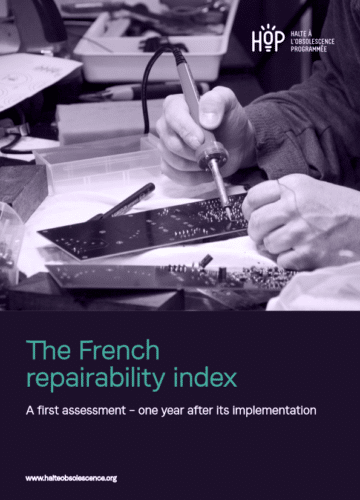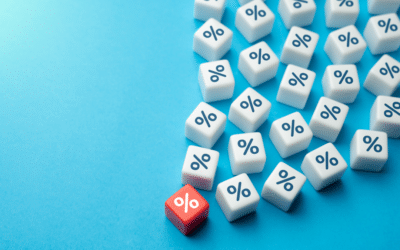One year after its implementation, HOP takes stock of the repairability index. The repairability index is an innovation that came into force in France in January 2021 for five product categories of electrical and electronic equipment (EEE), following several years of preparation with many stakeholders. Informing consumers about the repairability of these products, it raised high hopes for more sustainable consumption patterns and pushing manufacturers to design more repairable products. As a key part of France’s national strategy to extend products’ lifespan, this repair index serves to address obstacles to repair, and is in line with other regulatory instruments, such as the repair fund to reduce its cost, or the obligation to make spare parts available.
The repairability index is a self-declared score calculated by the manufacturers themselves, using a standard assessment grid provided by the Ministry of Ecological Transition (MTE). For this reason, we believe it is important to independently monitor these scores and the reliability of the information given to consumers. Indeed, control by the market and by official authorities is crucial to avoid unfair competition and deception of consumers, but also to achieve the environmental benefits associated with repair. Controls and sanctions in case of fraudulent scores (or failure to display the score) are applied from 2022 by the Directorate General for Competition, Consumer Affairs and Fraud Control (DGCCRF).
Involved in the elaboration and implementation of the anti-waste and circular economy law (AGEC) by taking part in numerous working groups to defend consumers and the environment, HOP decided to conduct an independent review of the index one year after its implementation, in a critical and constructive way in order to contribute to its evolution and success.
What future for the French repairability index
We interviewed repair actors to gather their observations and reflections, and conducted a survey with a large consumer panel to examine the index´s effect. HOP also decided to inspect specific repair scores by recalculating them, in order to test the methodology and to carry out the control by the market wished by the public authorities. The objective was to examine the clarity of the calculation grid, its ambition, and the relevance of the index criteria to ensure a uniform interpretation by all actors and the effectiveness of the repairability index itself. Building on our findings, this report sets out requests for clarification and recommendations for the French public authorities and to help the DGCCRF to target certain parameters in their controls.
We believe our remarks can also contribute to the ongoing reflections on the European repair score and on the future French durability index. Finally, the aim is to increase transparency around the index to ensure consumer confidence in the instrument.
First, we recall how and why the repairability index was set up. Second, we present a global assessment of its deployment and consumers´perception. Third, we describe the method and results obtained for our own calculation of the score of six products, which we compared to the ones calculated by producers. Finally, we summarize our recommendations and the points we feel need further clarification from the MTE.



